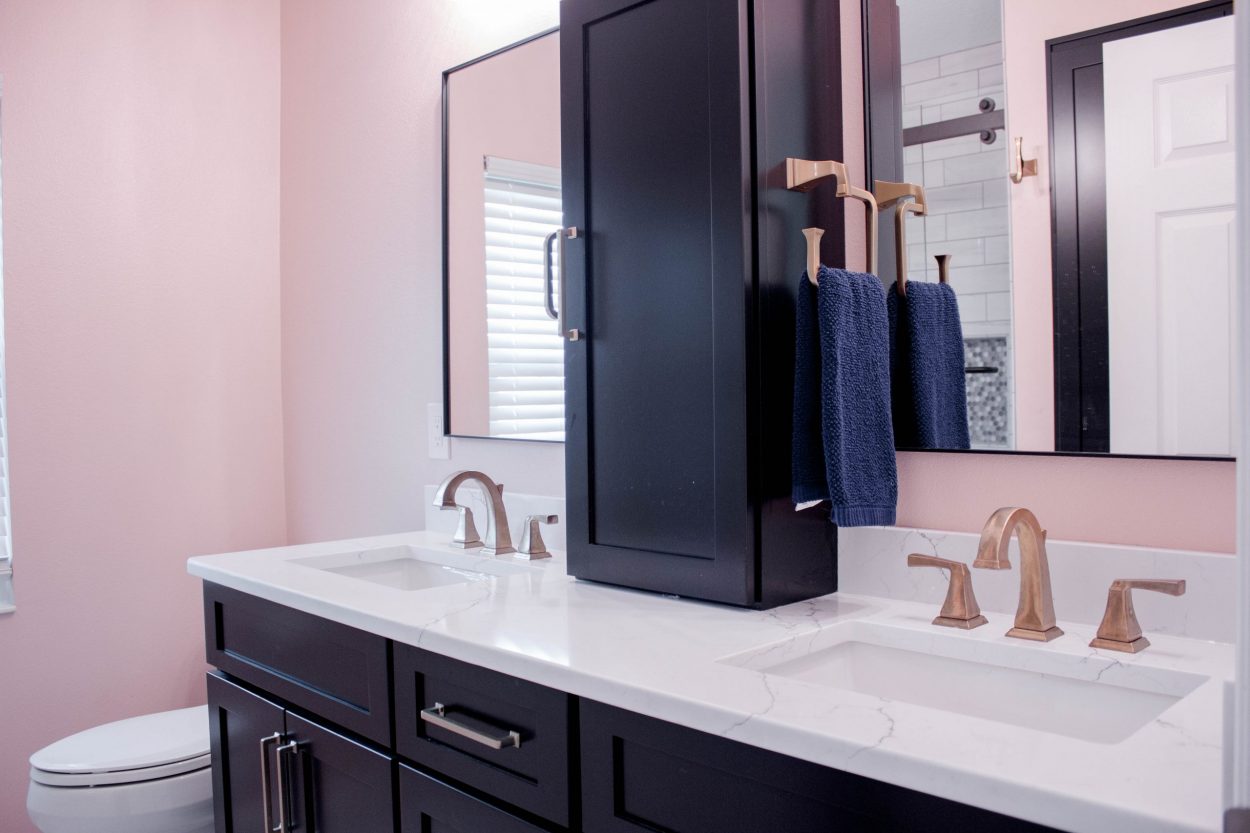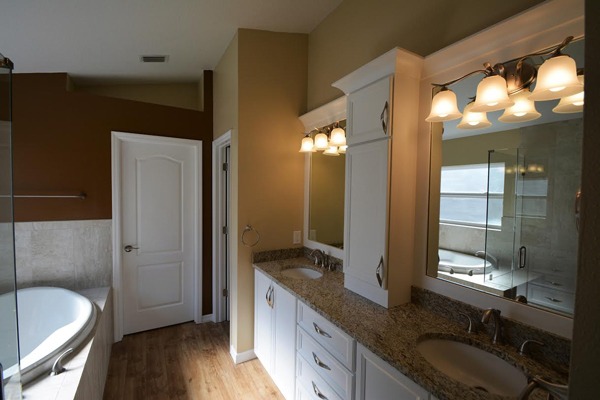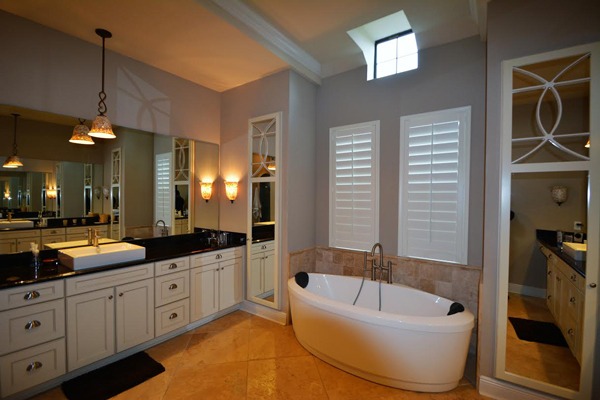Nearly everyone must begin thinking about accessibility within their home as they age, and mobility concerns start to arise. Bathrooms are notoriously one of the least accessible places in a home for disabled or handicapped people and most homeowners will find themselves needing to do bathroom remodeling in order to achieve the bathroom design they need. A full remodel is not always in the homeowner’s budget, but we have a few tips and tricks we can share about how to make a small bathroom handicap accessible.
Bathroom Remodeling Recommendations:
- Remove The Bathtub- Bathtubs have high sides that can be impossible for people with mobility issues to use. These sides are also tripping hazards and tubs tend to take up a lot of space. You can open that space by tearing out the tub and converting to a curbless shower stall during bathroom remodeling. Shower chairs and grab bars are also vital for safe inaccessible bathrooms.
- No Vanities- Wheelchair access to the sink when the sink bowl is placed in the vanity can be very difficult. Pedestal-style sinks, wall-mounted sinks, or sinks designed without storage space underneath are much more accessible and easier for people who have mobility devices to use. These sinks are also cheaper to install during bathroom remodeling than a vanity. Touchless faucets or lever handles are also more accessible than knobs and don’t forget that sinks must be at least 34 inches high to be accessible.
- Door Width- One of the most important things you may need to do during bathroom remodeling is to widen the doorways. You’ll need a door opening width of at least 32 inches to be wide enough for a wheelchair, but 36 inches width if you’ll need that wheelchair to turn into the bathroom, such as from a hallway entrance.
- Rise the Toilet- Sometimes getting a brand-new toilet such as a wall-mounted toilet or a bidet or best for persons with limited mobility. At the very least, consider a chair-height toilet to make standing up or transitioning from chair to toilet easier. Toilet seat risers can be an effective alternative when you cannot afford a brand-new toilet.
When remodeling your bathroom for accessibility you should always consult with experts in home design who have experience with building accessible homes. They may have ideas above and beyond what’s listed here to customize your home for your specific needs.
If you are ready to get started on your new bathroom, call The Bath and Kitchen Gallery of Tampa at 813-536-6837.






